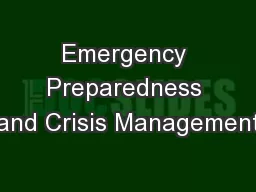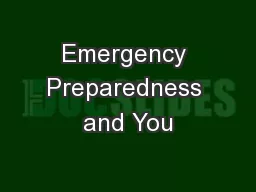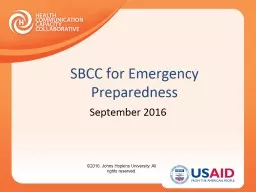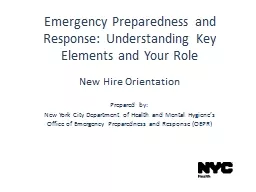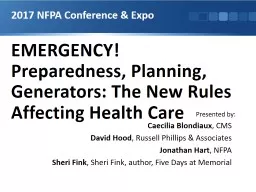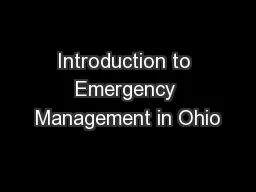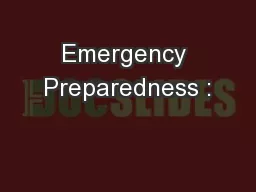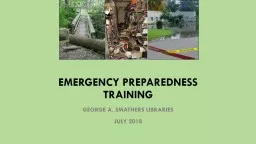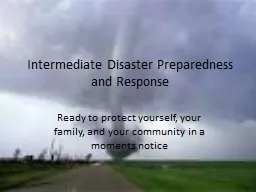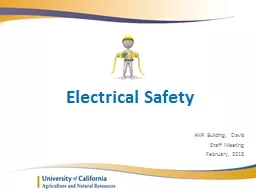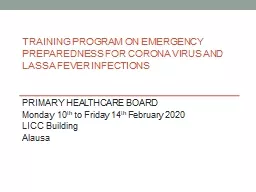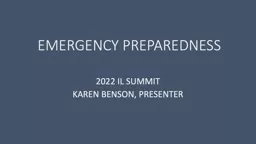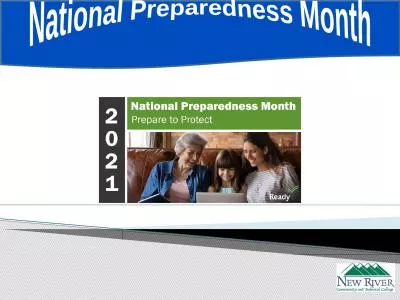PPT-Emergency Preparedness and Crisis Management
Author : trish-goza | Published Date : 2018-02-09
Minerva Safety Management Education Outline of module Introduction W hy is emergency response important What is an emergency response plan ERP Requirements when
Presentation Embed Code
Download Presentation
Download Presentation The PPT/PDF document "Emergency Preparedness and Crisis Manage..." is the property of its rightful owner. Permission is granted to download and print the materials on this website for personal, non-commercial use only, and to display it on your personal computer provided you do not modify the materials and that you retain all copyright notices contained in the materials. By downloading content from our website, you accept the terms of this agreement.
Emergency Preparedness and Crisis Management: Transcript
Download Rules Of Document
"Emergency Preparedness and Crisis Management"The content belongs to its owner. You may download and print it for personal use, without modification, and keep all copyright notices. By downloading, you agree to these terms.
Related Documents

